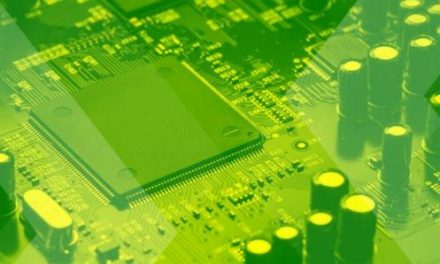Overcoming the Top 3D Printing Challenges
By Geoffrey Doyle, Director of Business Development, Jabil
First published on Jabil’s Blog https://www.jabil.com/insights/blog-main/overcoming-top-3d-printing-challenges.html
The outlook for 3D printing is exceedingly positive. Manufacturers see the potential benefits of the technology and how it could transform their organization’s supply chains. We revealed many of these optimistic sentiments from manufacturers in Jabil’s most recent 3D Printing Trends Survey:
- 81 percent are utilizing 3D printing today.
- 63 percent say they will more than double their current 3D printing use in the next few years.
- 91 percent believe 3D printing will change the way their industry thinks and operates.
- 93 percent expect to grow their 3D printing use for production parts in the coming years.
These sentiments are well-placed. After all, the technology has come a long way in recent years – with various industries embracing 3D printing for fully-functional production parts or customized products. For all other industries exploring opportunities with additive manufacturing, business disruption is inevitable.
Critical 3D Printing Challenges
Despite the bullish attitudes toward the growth and potential of 3D printing, a number of challenges remain with existing solutions and the adoption of the practice. Almost all manufacturing stakeholders responsible for 3D printing at their organization (96 percent) report facing challenges.
The top 3D printing challenges manufacturers face include:
- Lack of in-house expertise
- Cost of system equipment
- Cost of materials
- Part quality
- Limited selection of materials
- Technology limitations
- Difficulty in scaling operations
Although these are the top 3D printing challenges faced on average, their order shifts with an industry’s needs and maturity in additive manufacturing adoption. Let’s take a look at the top three 3D printing challenges faced by the Medical, Aerospace, Automotive, Electronics and Tooling industries. Download the full survey report.

Addressing the Lack of in-house 3D Printing Expertise
Considering how fast additive manufacturing is advancing, it can be very difficult to find the right talent to grow the technology in your organization as indicated in the survey results.
The reality is that you can draw on your team members. Whether it is injection molding or design, you can cross-train your existing talent to get them up to speed with 3D printing. Your design teams may require more support as they learn to design for additive manufacturing.
As is with any other case, investing in your experienced and incoming talent will be key to overcoming this challenge. In addition, your organization may want to consider partnership opportunities with universities that have already launched 3D printing labs to deliver training to engineering students.
Whether you are new to additive manufacturing or mature in your use of it, the competition for skilled talent will not be an easy one.
Budgetary Restrictions in Additive Manufacturing
Manufacturers need reliable 3D printing systems that can offer the quality they expect and promise from their operations. But that quality and complexity comes at a cost. Therefore it is not surprising to see the cost of system equipment and the cost of materials to be reported as a barrier in 3D printing adoption.
Before taking on additive manufacturing as a practice, you must first develop your strategy. Analyze your supply chains and parts you produce, develop a business case and make it all part of your strategy with a budget. Additive manufacturing is a long-term investment for your organization, if not a complete manufacturing transformation. Although the systems and materials may seem costly, they may offset or lead to significant cost-savings in productivity, efficiency as well as part properties.
For those who don’t want to take on 3D printing in their own supply chains, working with an external partner (like Jabil) is always another option.
Meeting Part Quality Requirements with 3D Printing
As we mentioned earlier, part quality—integrity, strength, aesthetics etc.—is a challenge many manufacturers face. While some sectors are doing well and transforming their customer experiences (think dental and hearing aid industries), others haven’t yet moved beyond prototyping to part production.
Taking into account that the technology has come a long way in the last few years, I don’t expect this to be a major challenge for much longer. As new materials are introduced, our ability to produce parts that meet our expectations will be strengthened. Since the 3D printing technology can also enable us to consolidate the number of parts we use, the opportunities are just waiting to be seized.
Opportunities to Advance 3D Printing Technology to Scale Operations
One of the primary attributes you can use to differentiate your business on is speed. Speed to concept, speed to prototype and speed to production are what matter in this world of instant gratification. Additive manufacturing is set to meet these demands as the technology advances.
Ultimately, 3D printing reduces the barriers to get a product to market or do a test market as it doesn’t require the significant investments in tools, molding and equipment required with traditional manufacturing methods. Organizations from startups to multi-national companies can all benefit from additive manufacturing.
Partnerships in the industry are already leading to big results and bringing additive manufacturing much closer to production for a number of industries. As the technologies become more open, innovation will thrive.
Manufacturers are Optimistic About Challenges
The good news is that 98 percent of respondents were optimistic that we’ll be able to overcome challenges surrounding additive manufacturing. In fact, 55 percent expect these challenges to be overcome as soon as the next three years.
We will need to focus our energy on the following to overcome these challenges:
- Strategy development
- Hiring and training
- Monetary investments
- New technology and innovation in additive manufacturing
- Time to change processes and attitudes
The one element we haven’t focused much on is time. Although manufacturers haven’t always been known to embrace change, we live in a world where that will no longer suffice. Therefore, time will be very telling to allow manufacturers to demonstrate how they handle change management when faced with vast opportunity.













